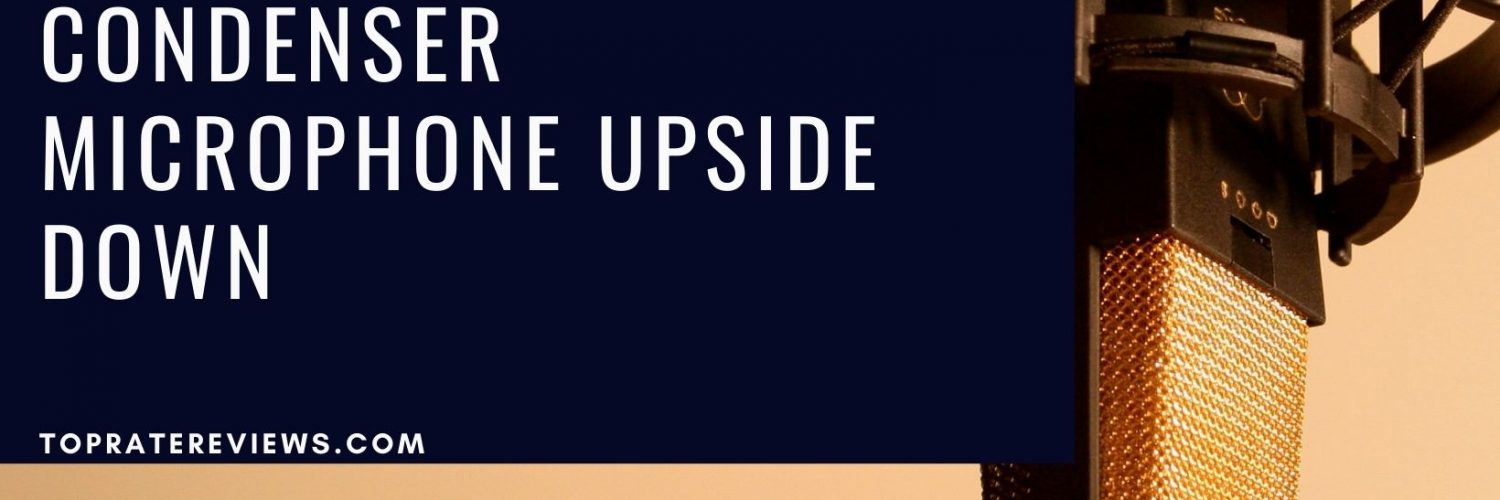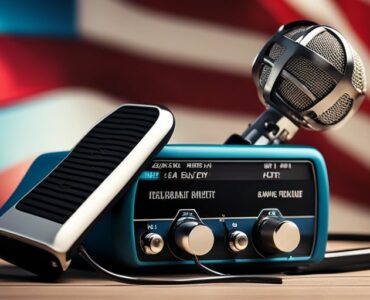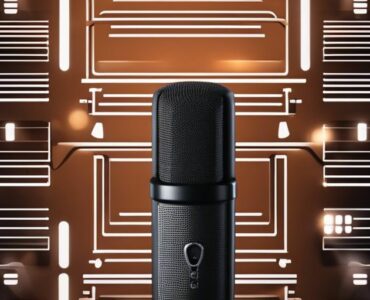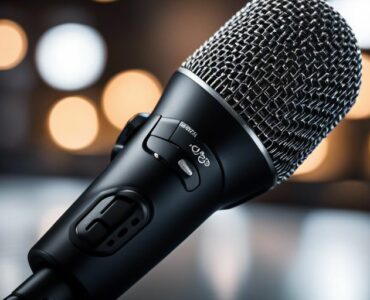
These reasons, however, are not something music school teachers teach or trainees in studios learn (more so because there are fewer commercial studios available now). Here are a few reasons understood by engineers and vocalists why condenser microphones have been hung this way.
Table of Contents
Benefits of Hanging Condenser Mics Upside Down
When thinking about hanging a condenser microphone upside down, some people believe it is merely a personal preference or for aesthetic purposes. However, most of them don’t know that hanging a microphone downwards provides a number of advantages. Some examples of this are as follows:
Prevents Overheating of Mic
Tube microphones provide the explanation for hanging a mic upside down. The heat from the tube might cause the diaphragm to change temperature over time. This causes the mic’s sound to alter. When recording with a condenser microphone in the upright position, the tube warms up. This temperature shift might eventually damage the mic and degrade the sound quality.
The heat will increase without passing through the diaphragm if the tube is placed above the capsule. This is due to the microphone’s components, such as the backplate and diaphragm. These are essential for soundwave to electrical conversion. As a result, when it hangs upside down, the diaphragm is above, and air may blow through to cool it down. Thus, it aids in lowering the temperature and cooling the microphone.
Aids in Opening Airways
The singer sings gently upward into the microphone, which opens the airway and facilitates a full-body voice. Hanging it upside down will help your airway expand. Moreover, your vocal cords function better if you want to record a song using a condenser mic.
You should sing with the voice of the whole body. Therefore, you sing up into the microphone at a lifting angle of 15 degrees in this setup. It will thus be easy for you to hit higher and lower notes without causing too much stress to your vocal cords.
Ease of Use
The upside-down arrangement allows users to easily adjust the microphone’s height by simply pulling it down or up. This way, you will not have to reconfigure the setup whenever there is a new user. Other than that, it does not limit or impede your view of the lyrics as well. You can have your song sheets in front of you and not be bothered about missing a note or skipping a word. This means that you can always offer better and consistent audio performance.
An upright microphone is also more likely to be knocked down every now and again. Thus, a hanging microphone lets the vocalist sing freely and express their emotions along with the ease of free arm movement.
Clarity of Sound
Microphone stands are prone to absorbing shocks from the ground, which can be due to several reasons. First, these shocks travel up to the microphone and add noise to your sound. Hanging your mic in an upside-down position will protect your mic from absorbing surrounding shocks and noise. Thus, it will give you a crystal-clear sound output.
Limits Air Blast Effects
If you sing upwards into an upside-down hanging mic, breath pops, also known as air bursts, which are unavoidable throughout the singing process, will be less audible. While some people employ pop filters to prevent this effect, hanging the microphone upside-down above the vocalist allows for effortless breathing and prevents air bursts from entering the microphone. This will result in enhanced sound quality and performance.
Things To Consider Before Hanging Your Microphone Upside-Down
The best microphone setting is a mix of performance and personal choice. Other than the upside-down position, you may set up your condenser mic in a variety of ways. Of course, every setup has advantages and disadvantages, but there are a few things to consider when arranging your microphone.
Shock Mount Adjustment
Every condenser mic comes with its own shock mount. The purpose of this is to effectively hold a microphone freely from the boom or stand. This helps to avoid any shocks or noise from being mechanically transferred to the mic through the stand. These shock mounts also provide a considerable amount of protection to the mic in case it falls down or gets struck.
The shock mount must be firm since any slack areas might cause your microphone to fall. To avoid any mishaps that might potentially destroy your microphone, double-check that all of the nuts are securely fastened. Other than that, select the height such that your microphone is safe from being struck by passersby. Furthermore, it should be at a distance so that no one can tamper with the settings.
Counterweight Management
Make sure you have enough counterweight and balance to keep the foundation stable and upright, so it doesn’t topple over. The counterweight can be of various types. For commercial and professional users, sandbag counterweights are available at production stores which are pricier but are readily available, and they ensure a steady weight.
For those who are DIY enthusiasts or looking for a more pocket-friendly solution, there are a number of different methods to create your own counterweight. Just make sure to weigh it so that it is in accordance with the mic’s weight and is heavy enough to hold down the stand in place. The microphone is also kept from wobbling by a balanced counterweight.
Make sure that your counterweight support is out of the way and covered in foam so that it doesn’t get knocked down.
Height Adjustment
Since upside-down microphones are going to be hung overhead, you have to make sure that their height is adjusted in accordance with the singer’s reach. A personal mic may need to be fixed once, while a mic in commercial studios will have to be readjusted for every new recording artist.
This is necessary to allow the vocalist to sing comfortably. They should not need to stretch their necks too far or tiptoe in case the mic is too high. Similarly, if the mic is lower, then a vocalist will have to bend their neck downwards, which will increase the occurrence of plosives.
Conclusion
As you may know by now, using condenser microphones in an upside-down setup to optimize recording and performance is a wonderful concept. Hanging your microphone upside down can minimize low-frequency noise from contacting or bumping into mic stands, adjustments, or unintentionally kicking a mic stand during a performance.
Many musicians prefer the microphone to be hanging upside down because it gives the most fluid comfort. Others find it appealing because it makes sense to them. Above all, keep in mind that your microphone handbook will determine the optimal recording position. What your microphone permits you to do is what you should do. If your microphone’s handbook states that recording upside down won’t create any issues, you’re set to go!
All you have to do is take care while putting them because condenser microphones are extremely delicate. We hope that we have covered all your concerns about “Why hang a condenser microphone upside down?” in this article and that it helps you in your recording journey. All the best!
Related Post: How To Power A Condensor Mic










Add comment